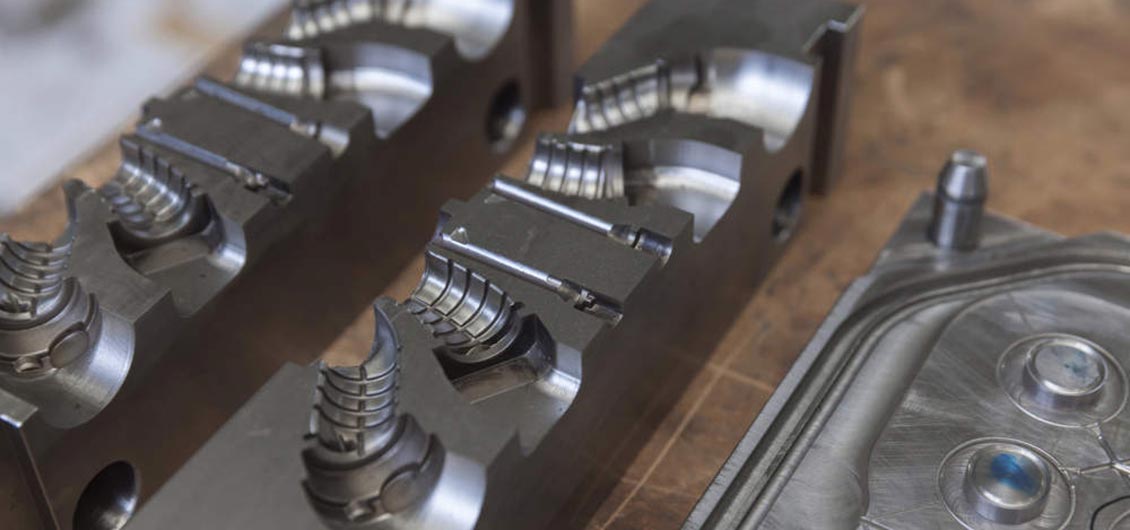Processes and operations in the technological world are evolving more and more every day. New technologies are being discovered while trying to improve old technologies. These new technologies lead to improved performance and efficiency among the older ones. The injection mold industry has been a victim of the rise in technological advances, and no one is complaining. There are many instances in which the injection mold process has evolved due to newer technologies, most notably the cooling systems.
The Importance of Injection Mold Cooling Systems
Historically, injection mold cooling systems would use water running through channels to cool the molds. The technology may be newer, but the method is the same. Water is still commonly used to assist in cooling as channels throughout the base plates circulate it. The only issue with the old method is that the water was not necessarily circulated through the cavities of the molds. Today, with technological advancements, this dream has become a reality.
The cooling system largely depends on the product’s material and geometry. Traditional cooling methods are used if the product you are molding is a simple design without complex curves and cavities. These standard cooling systems have the channels drilled or milled into the mold. These channels are straight and sometimes intersect.
What Makes a Mold Cooling System Effective?
Issues arise with the old methods when your products begin taking a more complex shape. These products and molds will require conformal cooling methods. With this method, the channels will be more planned out and will try to conform to the mold’s shape and curvatures. This will allow a more even, consistent cooling process, especially for those molds with harder-to-reach cavities.
There are a few essential keys to creating an effective cooling system. These keys are crucial in the production of the highest quality products.
- Key One: Ensure that the cooling channels are close to the thickest part of the mold cavity. Cooling the thin parts faster than the thicker areas could result in warping or breaking.
- Key Two: Large channels should have a consistent diameter throughout. With varying diameters for your channels, some areas will not be cooled as fast as others, resulting in potentially damaged or defective products.
- Key Three: Multiple smaller channels allow for more efficient cooling than single larger channels. You can fit many smaller channels throughout a mold than larger ones. Therefore, using the smaller ones will cover more surface area, resulting in a more consistently cooled mold.
- Key Four: Consider using heat transfer as a factor in selecting material. Different materials will transfer heat away from the product at different paces. Knowing what material your operations will use will help you decide on the cooling setup.
- Key Five: Allow your system to cool both halves of the mold consistently. Consistency is vital in the cooling process.
Using these keys in the design of your cooling process will help ensure that your products do not come out with warps or shrinkage. It could even prevent your operations from having to halt due to re-molding. Any stoppage of your operations could be a potential bottom-dollar killer.
Cooling Channel Designs Can Increase Effectiveness
The design of the cooling channels is another significant aspect when creating your perfect cooling system. These channels will help circulate your liquid of choice to cool your products. Baffles and Bubblers are smaller channels that connect to or run off from the main channels. Baffles connect to the main channels at a right angle. These tiny channels are semi-circular shaped. Bubblers are tubular and run off from the main channels. The liquid coolant is pumped through the tube and then down the outside of the tube back into the main channel.
Both features are needed to enable the coolant to reach more surface area of the mold. Thermal pins are filled with cooled liquid by drawing heat from the mold, vaporizing, then condensing back to liquid as coolant reaches it. This cycle means that the process can continually repeat itself throughout each cycle.
There are also two types of heat transfer calculations you can make that take things like the material, temperature of the material, and time into consideration. Conduction is heat transfer from plastic to metal, and convection is heat transfer from metal to liquid coolant. Both convection and conduction heat transfer have formulas to use to calculate their cooling times. Most of the formulas are integrated into 3d/CAD software, so you don’t need to run and get your calculators.
Why Choose PFA, Inc. for Your Cooling Systems?
To achieve the highest quality products, your operations must have a top-notch cooling system. This article and PFA, Inc. can help you begin the process of designing your cooling system. For more information about how our products improve your plastic injection molding processes, visit our products page. For more immediate assistance, reach out at our contact us page or call us now at (262) 250-4410!


